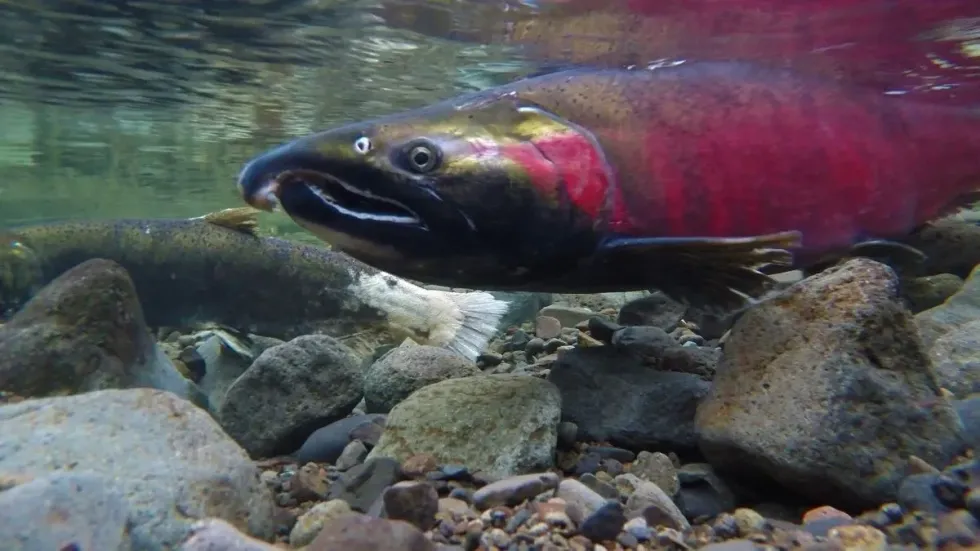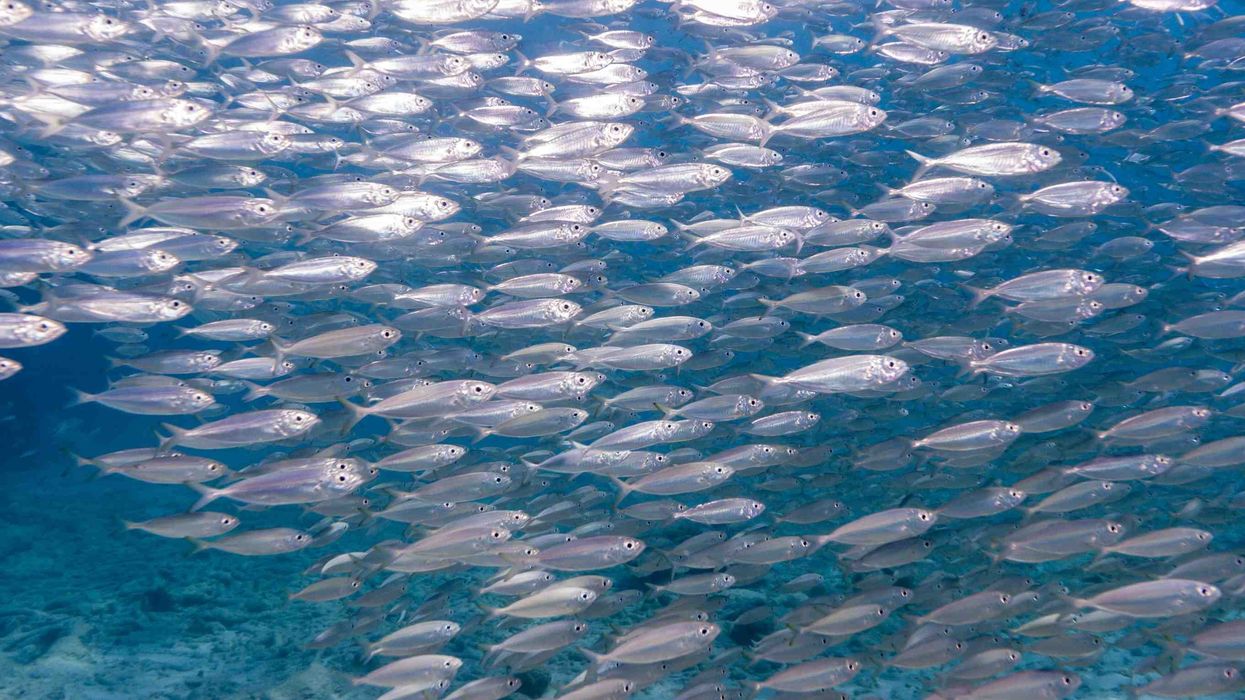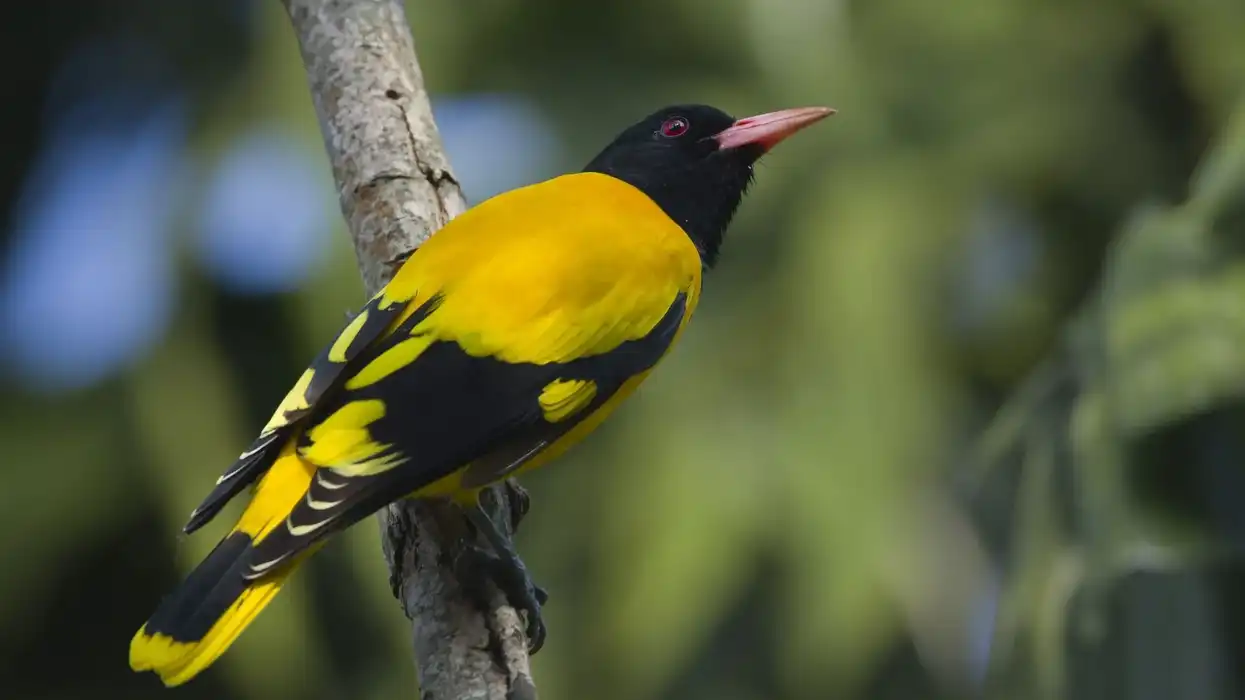Wondering if there is marine life in the fascinating Black Sea? The answer is yes!
There are approximately 180 species of fish that inhabit the Black Sea. The Black Sea salmon, (Salmo labrax) is one of them.
It is quite a small species of salmon that is a member of the Salmonidae family and the genus Salmo. It ranges between 20-43.3 in (50.8-110 cm) in length and between 7.7-55.1 lb (3.5-25 kg) in weight. However, it rarely goes over 30 in (76.2 cm).
It is a close relative of the infamous brown trout (Salmo trutta). As the name of this species suggests, it inhabits the famous Black Sea, which is a mediterranean sea of the Atlantic Ocean located between Asia and Europe.
It inhabits the northern coasts of the Black Sea and the incoming rivers and streams. It is the only native species of Salmo that occur in the northern region of the Black Sea basin.
It may cross-breed with the Salmo trutta, the brown trout, when inhabiting rivers. The unique-looking Black Sea salmon acquires brackish, demersal, marine, and freshwater environments. It is a migratory species, whose migration path is now blocked due to the construction of dams.
It does not has a conservation status as it has not been evaluated by the IUCN yet. The Black Sea salmon has a high demand in the fish market and is only caught in lesser quantities as compared to other fish of the region.
Its demand is reflected in its cost. Keep reading to get to know more information about the Black Sea salmon!
If you enjoyed reading our Black Sea salmon fun facts, do check out our chum salmon amazing facts and chinook salmon surprising facts!
Black Sea Salmon Interesting Facts
What type of animal is a Black Sea salmon?
The Black Sea salmon, Salmo labrax, is a small species of salmon that ranges between 20-43.3 in (50.8-110 cm) in length. The common name of this salmon 'Black Sea salmon' was kept as it is endemic to the Black Sea. It is a close relative of the similar-looking brown trout.
What class of animal does a Black Sea salmon belong to?
This species of salmon belongs to the class Actinopterygii, the family Salmonidae, and the genus Salmo. It is the only native Salmo genus species that occurs in the northern region of the Black Sea basin.
How many Black Sea salmons are there in the world?
They are lacustrine, anadromous (migrate to river from sea to spawn), and resident river populations. There is no data available about the present population number of this species. However, we do know that the population in the sea is declining, whereas the resident river populations are stable.
Where does a Black Sea salmon live?
The Black Sea salmon inhabits salty seawater. It lives in the Black Sea and the northern region of the Black Sea, referred to as the Sea of Azov. It can be also found in the larger rivers that are connected to the sea.
What is a Black Sea salmon's habitat?
This is the only native species of salmon that occurs in the northern region of the Black Sea basin. It can be seen living in estuaries, open seas, as well as large rivers when it is time for laying eggs. It acquires brackish, demersal, marine, and freshwater environments.
Who do Black Sea salmon live with?
Black Sea salmon (Salmo labrax) are solitary in nature and are not seen living in large swarms. However, it wanders into small swarms.
How long does a black sea salmon live?
The life expectancy of the Black sea salmon is currently not known. However, the majority of salmon species live for 2-7 years, with 4-5 years being on average.
How do they reproduce?
This species occurs in seawater mainly, but it swims to the river to lay eggs. Macrophytic algae give a suitable spawning ground in the river for this species.
It is known to spawn mostly in spring but may do it in January-March. The female salmon burrows small holes in the ground for spawning. She returns after she has laid eggs.
Interestingly, she can give offspring of two forms, resident and anadromous. The male guards these eggs for a while and then returns to the sea. The newly emerged fry feeds upon water insects or their larvae.
They travel to the saltwater by the age of three. They look similar to trout fish and live a life in the same manner.
What is their conservation status?
The Black Sea salmon, Salmo labrax, does not has a conservation status as it has not been evaluated by the IUCN yet. However, it has been listed in the Red Book.
The Black Sea salmon, Salmo trutta labrax, suffers mainly due to water pollution of the Black Sea, construction of dams, competition with non-native fish species, and overfishing. To conserve these salmonids, the artificially rearing of this species was initiated.
Black Sea Salmon Fun Facts
What do black sea salmon look like?
The Black Sea Salmon, (Salmo labrax) is quite a small species of salmon that has an elongated body. Its body has small scales all over it. It has a dark silver rear side which also has a blue hue.
Its lower side is silvery and blends into its white-colored belly. There are black spots all over its body. There are numerous gill stamens.

*Please note that this image is of a brown trout and not of a Black Sea salmon. If you have an image of a Black Sea salmon, please let us know at hello@kidadl.com
How cute are they?
These fish have a unique appearance. They have distinct spots all over their body that make them stand out. They can be a little creepy to Trypophobic (fearful of dots) people!
How do they communicate?
Salmons are known to communicate with each other by darkening their skin. They can also communicate via chemical signals!
How big is a Black Sea salmon?
The Black Sea salmon is a small species of salmon. The length ranges between 20-43.3 in (50.8-110 cm) of the magnificent Black Sea salmon.
The Black Sea salmon (Salmo labrax) doesn't grow longer than 30 in (72.4 cm). Its length is similar to another small species of salmon, the Atlantic salmon!
How fast can a Black Sea salmon swim?
The speed of these fish has not been evaluated yet. However, we do know that the Atlantic salmon can swim at a speed of 3 kph (2 mph).
How much does a Black Sea salmon weigh?
Salmo labrax, (Black Sea salmon) weighs between the range of 7.7-55.1 lb (3.5-25 kg)!
What are the male and female names of the species?
The Salmo labrax (Black Sea salmon) doesn't have any specific name for its male and females!
What would you call a baby Black Sea salmon?
Black Sea salmon baby can be called a fry or alevin!
What do they eat?
They prey upon invertebrates, like mollusks and crustaceans, as well as small fish. The fry feed upon water insects and their larvae. Humans consume this fish.
Are they dangerous?
No, these species are harmless to humans.
Would they make a good pet?
No, these salmons wouldn't make great pets. Their natural habitat is hard to mimic. Listed in the Red Book, it is illegal to capture the Black Sea salmon. Black Sea salmon (Salmo labrax) is, however, still captured illegally in small quantities.
Did you know...
The larger the salmon female is, the larger is her clutch size!
What kind of fish live in the Black Sea?
The Black Sea is home to 180 fish species that comprise bottlenose dolphins, anchovy, tuna, mackerel, herring, and the renowned white sturgeon! It is also home to the spiny dogfish sharks!
What are salmon known for?
It is known for its silver coloration. It is also known to anadromous, as it hatches in freshwaters, then migrates to oceans, then it comes back to the freshwaters, like rivers, to breed.
This journey done by the salmon to breed is one of the greatest achievements of nature! It is also a healthy fish as it is quite oily, and has a high omega content!
Here at Kidadl, we have carefully created lots of interesting family-friendly animal facts for everyone to discover! For more relatable content, check out these shark facts for kids and Nile Tilapia interesting facts pages!
You can even occupy yourself at home by coloring in one of our free printable black sea salmon coloring pages!
*Please note that this image is of a Pacific salmon and not of a Black Sea salmon. If you have an image of a Black Sea salmon, please let us know at hello@kidadl.com.










